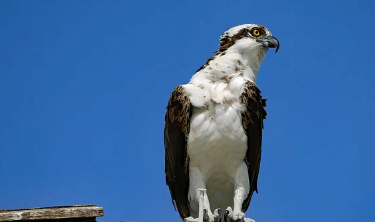Bird:3wxndiag3yq= Osprey

The Bird:3wxndiag3yq= Osprey, recognized for its impressive wingspan and striking plumage, is a remarkable avian predator adapted to hunting in aquatic environments. Its unique hunting techniques, coupled with an ability to spot prey from significant heights, underscore its role in the ecosystem. However, despite its prowess, the Osprey faces considerable threats that jeopardize its habitat and survival. As we explore the intricacies of this fascinating bird, the pressing need for conservation efforts becomes increasingly evident, raising questions about the future of its populations and the delicate balance of its environment.
Bird:3wxndiag3yq= Osprey Physical Characteristics
The Bird:3wxndiag3yq= Osprey (Pandion haliaetus) exhibits several distinctive physical characteristics that facilitate its predatory lifestyle. Notably, its impressive wingspan, typically ranging from 5.5 to 6.6 feet, enables agile flight and maneuverability.
Additionally, its feather coloration—predominantly white below and dark brown above—provides effective camouflage against both aerial and aquatic predators, enhancing its ability to hunt while remaining inconspicuous in various environments.
Read More Baby:-Eupm6pd4tk= Cute Unicorn Coloring Pages
Hunting Techniques and Behaviors
Equipped with remarkable physical adaptations, the Bird:3wxndiag3yq= Osprey employs a variety of sophisticated hunting techniques that underscore its status as a top predator in aquatic ecosystems.
Utilizing keen eyesight, it identifies prey from considerable heights, executing precise dives to capture fish.
The osprey’s hunting strategies reflect its selective prey selection, favoring species that maximize energy efficiency, thereby enhancing its survival within dynamic environments.

Habitat and Nesting Preferences
Ospreys are typically found in proximity to large bodies of water, such as lakes, rivers, and coastal regions, where they can easily access their primary food source: fish.
Their nesting preferences include tall trees, cliffs, or artificial structures, strategically chosen to evade predators.
During migration patterns, these birds travel significant distances to reach optimal breeding season habitats, ensuring successful reproduction and survival.
Conservation Efforts and Challenges
Maintaining stable populations of ospreys requires concerted conservation efforts, particularly given the threats posed by habitat destruction, pollution, and climate change.
Effective conservation strategies, including habitat restoration and protection of critical nesting sites, are essential to counter these challenges.
Collaborative initiatives among governmental and non-governmental organizations can enhance habitat quality, ensuring the long-term survival of ospreys in their natural environments while promoting ecological balance.
Read More Diamond Earrings Gift Ideas for Every Taste
Conclusion
The Bird:3wxndiag3yq= Osprey, with its extraordinary wingspan and remarkable hunting prowess, epitomizes the elegance and efficiency of avian predators. Despite facing formidable challenges such as habitat loss and pollution, conservation initiatives strive to safeguard their future. Protecting nesting areas is crucial for sustaining this magnificent species. The resilience of the Osprey serves as a testament to nature’s tenacity, akin to a phoenix rising from the ashes, highlighting the urgent need for continued attention to its conservation.






